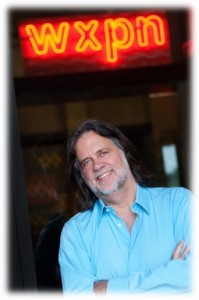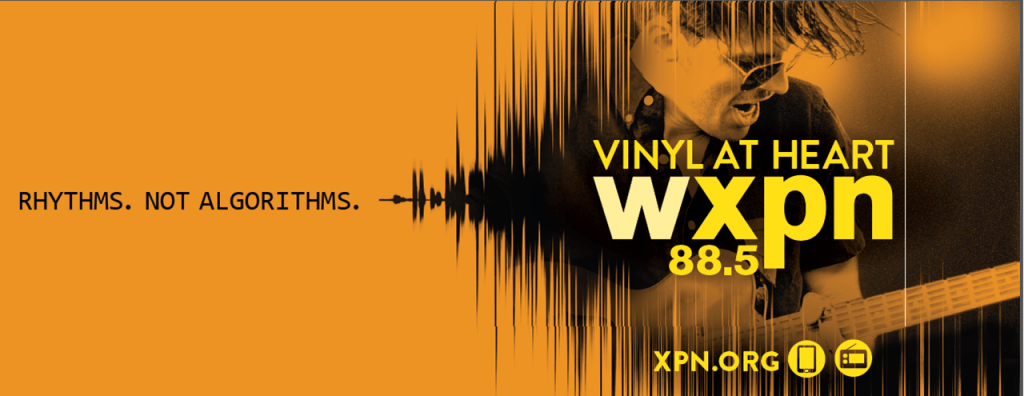Thankfully, our “Best of JacoBLOG” stall tactic is nearly over. This blog will be back with fresh content Monday (and a good post!), but in the meantime, we’re dredging up our most popular entries of 2014. And this one made the list. It’s a great story of broadcast radio taking the offensive against that little pure-play known as Pandora. Hats off to XPN. And we’ll see you Monday morning, bright and early. – FJ
Historically, radio stations have done a great job of attacking other radio stations. Whether Top 40, Rock, Country, or Talk, most radio stations focus their competitive energies on besting another station in town in order to gain both a ratings and revenue advantage.
In the meantime, radio has been faced with digital competition for nearly two decades, starting with satellite radio, moving to iPods, and in the past few years, serious incursions from pure-plays, notably Pandora.
And that competitive scenario has become complicated. On the one hand, many broadcasters clearly aver that Internet radio isn’t “radio” in the true sense, lacking DJs, personalities, and other attributes.
On the other hand, statisticians and analysts, along with measurement companies from Triton to Nielsen, are grappling with the true listening levels and impact of pure plays, especially the big dog – Pandora.
In this morass of changing consumers’ tastes, one radio station has made a profound decision – to acknowledge the new threat, and go right to the heart of why their brand is different and better.
The station in question is none other than legendary public radio outlet, WXPN in Philadelphia. Format labels are difficult with stations like XPN, but most industry people think of the station as Triple A. The XPN facility is an amazing one, anchored by a real live club that hosts new and established musicians and bands – the World Café:
Here’s a sneak preview of their “Vinyl At Heart” campaign that will begin next month
Programmer Bruce Warren is an iconic leader in public radio, and with his boss, GM Roger LaMay (pictured below), XPN is now venturing where no radio station has gone before. Starting next month, they’re launching an aggressive multi-media campaign designed to connect with music fans in a direct and meaningful way.
Roger was kind enough to answer some questions, provide background about the campaign, and explain why XPN decided to go for it:
JM: To our knowledge, you’re the first broadcaster strategically differentiating yourselves from pure-plays (and I’m assuming iPods, etc.). What was the reasoning behind this campaign?
RL: In recent years, our research has had two key findings. First, about half the people in our region who like the kind of music we play don’t know we exist. Second, that Millennial listeners to XPN have a very similar outlook on music as our older listeners and share a lot of values with their parents.
The overwhelming competition for these ears is Pandora and the pure-plays. A segment of that listenership, which is there for musical discovery, would be drawn to something more human and less corporate that really cares about the artists and the audience. Our listeners, current and potential, love live music in part because they love being part of a community. It may be a small segment to the online services, but it’s huge to us.
JM: Most stations see the competition as other stations on the FM band. What caused you to take a longer look at the competitive landscape?
RL: Just look at the numbers. The use of Pandora alone dwarfs the commercial competition. When you add in Spotify and the other pure plays, it’s clear that this is the competition, and that becomes more true every day. This fact is sharpened for us as a public station for two reasons. These services offer and market a form of musical discovery which is our raison d’etre. Also, despite their efforts to convert listeners to subscribers, they have conditioned listeners to FREE.
We deliver it for free, but ask listeners to pay us voluntarily. Ironically, as these services turn increasingly to advertising for revenue, our non-commercial presentation will offer the same kind of alternative we have used as a point of difference with commercial radio stations.
JM: You’re putting a lot of chips on curation – that is, people who have expertise in music and know the local turf. Why do you think this is an area that will appeal to Philly listeners?
RL: Curation and community are always among the top few drivers for our listeners and they are distinguishing characteristics of our brand of musical discovery versus the online services. While certainly the bigger mass audience is not concerned with the sensibility, there is a significant cohort of any age music fan who wants to connect with something real and human. For many, the ease and ubiquity of technology deepens the hunger for community and connection.
We are a trusted source that isn’t trying to exploit and make money from their love of music, but rather we’re trying to deepen the experience. Our mantra is “we connect artists and audiences.” These values are echoed well in the messages in our marketing campaign. The other thing we can do that the national services can’t is connect to the local music community in a significant way with grassroots curation.
JM: You’re using many different platforms and sources for the campaign. How did you determine the media mix, and how will you evaluate the campaign’s effectiveness?
RL: The media mix evolved in collaboration with the terrific ad agency, Pavone from Harrisburg, PA, who developed this campaign and won the assignment in response to an RFP. The target is the ring of people just outside the core we have; those folks who share characteristics with our current audience including a love of musical discovery.
We are achieving reach with a six week digital billboard, bus and transit buy, as well as a little bit of print. We also wanted to target the younger end, 18-34 (and beyond), of the potential audience with an online multi-platform sweepstakes for selfies, making creative use of album covers.
We also are working with Zipcar with in-car magnets, exhorting drivers to use the “highly sophisticated listening device designed to broaden your horizons and introduce you to a highly original acoustic experience. It’s called a radio” and tune it to 88.5. This will all be on top of the campaign elements on our own air reinforcing our existing audience relationship. The measurements in the short term will be traditional, using PPM and clicks, etc. (I am not a believer in PPM’s accuracy in measuring niche services such as public radio music stations), but the real goal is to grow membership. We are investing about $200,000 ($150K on marketing and another $50K on membership acquisition) with the specific goal of adding 2,000 new members over two years.
JM: What’s the message here for other broadcasters, commercial or public? Do you see this tactic spreading?
RL: Sure. Clearly people are approaching this in different ways. We are being more direct. The best thing about this campaign is that it’s an authentic expression of the alternative we offer. A community-centered curation not only separates us from the pure-plays, but satellite radio and commercial radio as well. Again, the challenge is not creating a group of people who want human, curated, non-corporate musical discovery; it’s helping them find us. That’s where marketing comes in. Few stations like us do it or can afford to. Our position is that we can’t afford not to if we want to sustain this valuable service.
JM: What else should we know about this campaign and XPN’s efforts?
RL: Not only is the creative and focus of the campaign somewhat groundbreaking, but a marketing investment of this size by a standalone public radio music station is to my knowledge unprecedented. We are not paying this out of normal fundraising or membership either. Rather, I am personally raising the money from long time major donors to the station who believe in our mission and want to support this specific effort. I am still engaged in this, so any help from fellow believers is welcome.
So will this aggressive XPN campaign become the beginning of direct tactical positioning (and rep0sitioning) of digital competitors?
We’ll all be watching this effort carefully, and appreciate Roger and Bruce Warren sharing a preview of the campaign and the philosophy behind it with us.
- What To Do If Your Radio Station Goes Through A Midlife Crisis - April 25, 2025
- A 2020 Lesson?It Could All Be Gone In A Flash - April 24, 2025
- How AI Can Give Radio Personalities More…PERSONALITY - April 23, 2025






Leave a Reply